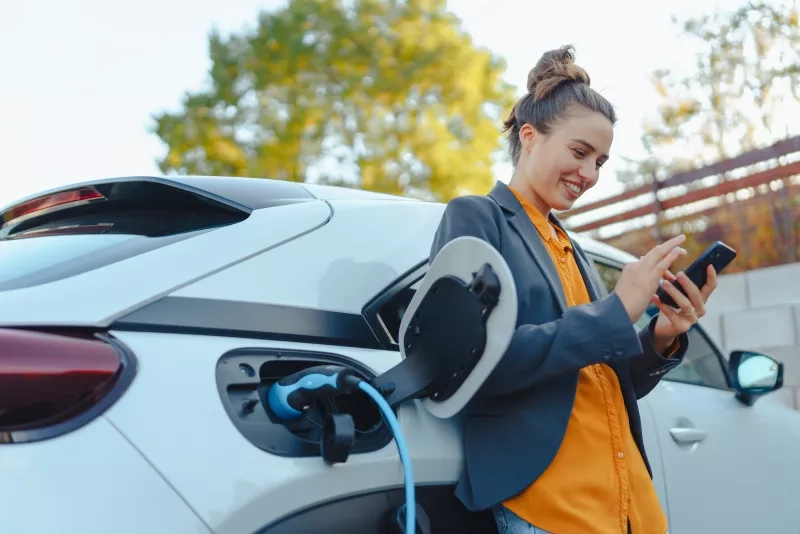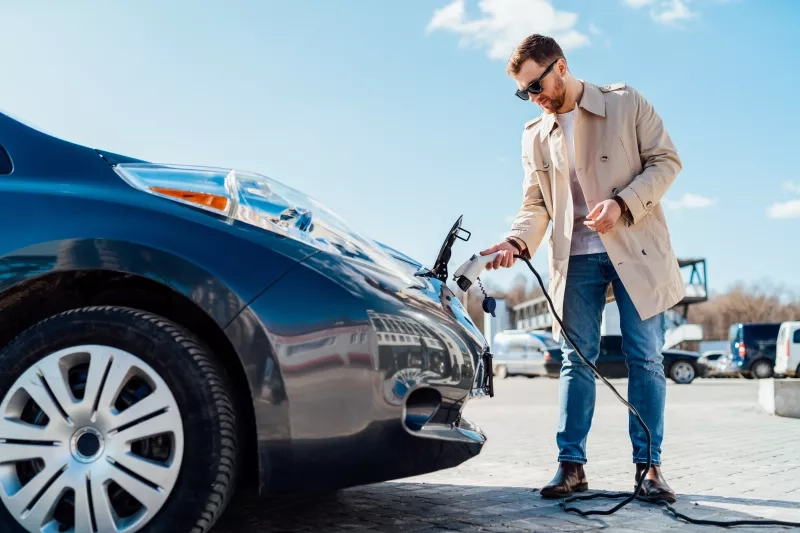
Busting common myths about electric vehicle ownership
3 Minute Read
There are many tall tales about cars and electric vehicles (EVs) are no exception.
New, eco-friendly, and shrouded in their fair share of misinformation and urban myths—the positives and negatives of EV ownership can be conflicting for many buyers. While we've had over a century to get into gear with gas-powered vehicles, EVs require a whole new set of information and learning that won't necessarily be handed down in the family garage.
Ready to bust the myths and charge up your EV knowledge? Read on to learn the truth about these common EV myths.
EVs lack sufficient range: False
Contrary to this stereotype born in the early days of EV availability, most modern EVs can carry on between 400 km and 650 km on a single charge, depending on the model and weather. While longer trips may require some advanced planning, most daily commutes can easily fit inside the boundaries of an EV's standard range – a recent CAA study found that most drivers stay under 100km a day.
EVs are expensive to purchase: Partially true
There's no doubt that EV price tags are higher than their gas-powered counterparts, but this doesn't tell the whole story.
The combustion engine has been around for nearly 150 years, refined to meet every possible consumer need and budget. On the other hand, electric vehicles are a newer technology still finding its footing in the market. As demand grows and technology advances, market forces suggest that EV adoption will slowly increase, potentially causing prices to drop over time.
While the upfront cost of EVs may be higher, drivers save significantly with lower maintenance costs and by skipping those costly trips to the pump.
EVs are slow and perform poorly: False
Another misimpression from the early days of EVs is that the idea that they perform poorly could not be farther from the truth. With instant torque, rapid acceleration and a lower centre of gravity owing to their central battery, modern EVs tend to outperform their gas-powered cousins in multiple areas. Even outside regular commuter vehicles, top-of-the-line EVs like the Tesla Model S consistently perform highly in the world of premium cars.
EVs take a long time to charge: Partially true

Home charging is the most affordable and widely used method for powering an EV, but it can be time-consuming. Charging times vary significantly, ranging from 8 to over 30 hours, depending on the outlet type, battery size, and connection.
While this may seem like a drawback, it's far from a dealbreaker. Although a recent PlugShare survey for CAA found that around 70 per cent of EV owners feel there isn’t enough public charging infrastructure, fast-charging stations are becoming increasingly accessible. Depending on your EV model, these stations can replenish a battery in as little as 20 to 40 minutes.
EVs are not completely zero-emission: True
EVs do not emit direct emissions from their tailpipes and are thus considered zero-emission vehicles.
However, the electricity they run off of isn't necessarily 'net-zero' and can come from energy sources that are high carbon emitters. Because of this, EVs undeniably provide a drastic reduction in emissions compared to gas-powered vehicles but are technically not completely zero-emission in the strictest sense.
You cannot drive an EV in cold weather: False
Cold weather can significantly impact an EV's driving range, reducing it by 3 to 40 per cent, depending on the model and temperature. While this is no small hurdle, it hardly knocks EVs entirely out of the race - with most average driving ranges still able to accommodate the needs of daily commuters.
Additionally, several strategic workarounds can minimize energy consumption and keep your EV rolling all winter, such as pre-conditioning the vehicle, using eco-mode to reduce ancillary energy consumption, and ensuring there is always a 20 per cent charge to keep the battery in peak condition.
It is difficult to find charging stations for EVs: Partially true
EV charging stations are rapidly appearing across Canada, but the infrastructure is not yet universal. Major metropolitan areas have the highest concentration of stations, while rural and remote regions are less well served. Charging stations can still be found outside of cities, but rural EV owners and city-dwellers travelling out of town need to plan their trips and top-ups more carefully.
Thankfully, resources like PlugShare, EnergyHub, and AAA’s EV Charging Station Locator provide extensive information and interactive maps to help you find your nearest charging station, whether you’re in downtown Toronto, the hills of the Yukon, or travelling across the U.S.
Drive past the myths
Buying and owning a vehicle doesn’t have to be stressful, even with new technology like EVs. By understanding the facts and breaking through common misconceptions, you can confidently make a smart and informed choice when shopping for your next car.
Want to learn more about EVs? www.caaneo.ca/advocacy-EV
Know before you buy: CAA North & East Ontario content aims to be neutral and informative. Whether you're new to EVs or looking for a replacement vehicle, it's important to ask questions, talk to experts and do a test drive with a dealership so you can make an informed decision.




